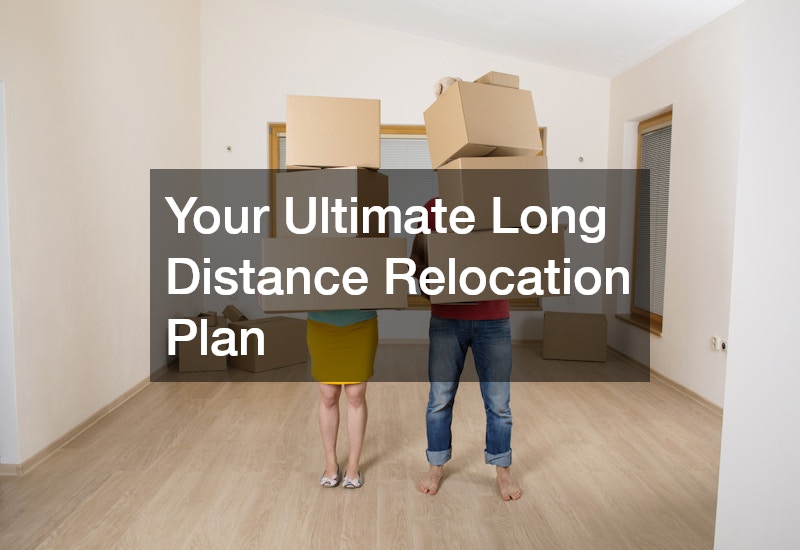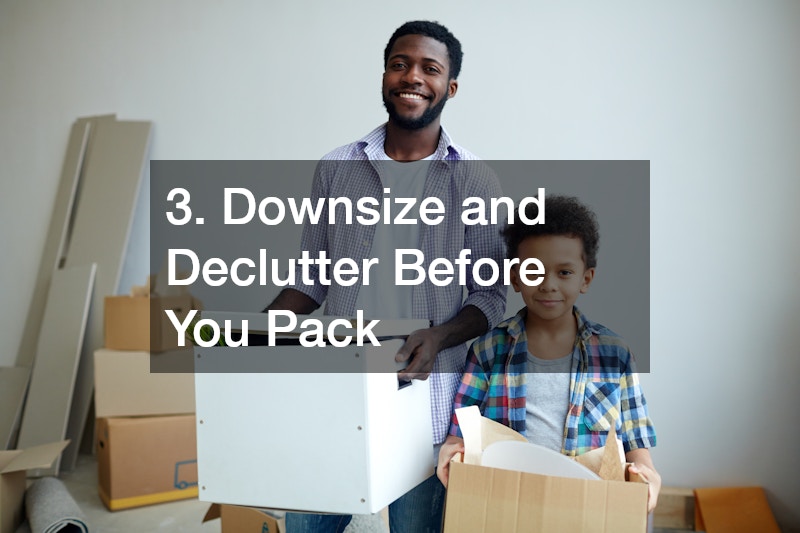

Planning a long distance move can feel overwhelming, even for the most organized individuals. There are so many moving parts to consider, from coordinating logistics to adjusting your personal and professional life around the transition. Whether you’re moving across the country for a new job opportunity, family reasons, or simply a fresh start, having a structured relocation plan in place is the key to success. A well-thought-out approach ensures that no detail is overlooked and helps minimize stress during what is often a hectic and emotional process.
Unlike local moves, long distance relocations come with unique challenges such as shipping vehicles, planning for travel and overnight stays, ensuring the safety of your belongings during transit, and syncing your schedule with a variety of third-party vendors. You also need to manage documentation changes, utility transfers, and possibly even temporary housing. With so many moving pieces, trying to “wing it” isn’t just unwise—it’s a recipe for disaster.
This ultimate guide is designed to walk you through the most critical steps of building a thorough plan. From setting your timeline and budget to choosing the right vendors, understanding transportation logistics, and preparing your household, you’ll find everything you need to make your move as smooth and efficient as possible. By tackling each phase proactively, you can eliminate surprises and gain confidence in what might otherwise feel like a chaotic transition.
1. Start With a Defined Timeline and Budget
Every solid relocation plan begins with two foundational elements: a timeline and a budget. Without them, your move is more likely to spiral into confusion or unnecessary expenses. First, establish your ideal move date and then work backward to create a realistic schedule. Think about when to give notice to your current landlord or employer, when to schedule your packing days, and when to set up appointments with movers.
Your budget should include all potential costs: transportation, packing supplies, lodging, meals during travel, storage, and labor. Don’t forget to account for pet transport, deposits for your new residence, or interim costs if you have to stay somewhere temporarily. Budgeting with cushion room can help you handle unforeseen expenses, which are common in long distance moves.
Once you have your timeline and budget clearly outlined, incorporate those milestones into your calendar and task list. A written or digital version of your relocation plan will help you stay on track and adjust quickly if something changes unexpectedly.
2. Hire Reputable Long Distance Movers
Not all moving companies are created equal, especially when it comes to long distance relocations. Hiring reliable long distance movers is one of the most important choices you’ll make in the entire process. Unlike local moves where you might load and unload your own truck, long distance moves require careful coordination, consistent communication, and trust that your items will arrive safely and on time.
Do thorough research before making your selection. Read reviews, ask for quotes from multiple companies, and check that each moving company is properly licensed and insured. Ask for a binding estimate if possible, and understand what is and isn’t included in your service package. Be especially cautious about companies that demand large deposits upfront or seem unwilling to provide documentation.
Once you’ve hired your long distance movers, confirm dates, pickup windows, and delivery timelines. Add their contact details to your relocation plan so you can quickly reach out if anything shifts in your schedule. The peace of mind that comes with choosing a trustworthy team can’t be overstated—this is one place where it pays to prioritize experience and reliability over cost alone.
3. Downsize and Declutter Before You Pack
Long distance moves are priced based on weight and volume, so transporting things you no longer need will only add to your bill. Use your relocation as an opportunity to go through your belongings and decide what stays and what goes. Items that are broken, outdated, or haven’t been used in over a year should be donated, recycled, or thrown away.
Holding a garage sale, selling furniture online, or donating to local charities are great ways to give unwanted items a second life. For the things you choose to discard, make sure you dispose of them responsibly. Contact your local waste management company to learn about dump disposals in your area, especially if you’re getting rid of large furniture or hazardous materials.
Document your downsizing process as part of your moving plan. Create a list of what you’ll be taking with you, what needs to be packed, and what you’ve let go. Not only will this help you stay organized during the move, but it will also simplify the unpacking process once you arrive at your new home.
4. Decide What to Ship, Store, or Haul Yourself
When planning a long distance move, you’ll need to determine how your belongings will get to your new location. Some items might be best kept in storage until you’re fully settled, while others may need to travel with you. Your moving plan should include three distinct categories: what to ship professionally, what to transport personally, and what to store temporarily.
Many homeowners use short-term storage when there’s a gap between leaving their old home and moving into the new one. If that’s the case for you, look into renting storage units or even exploring used shipping containers for sale. These containers offer flexibility and can double as long-term storage solutions if you’re downsizing or moving in stages.
Your decision should be based on value, necessity, and the sensitivity of each item. Important documents, electronics, and sentimental items are better off traveling with you personally, while large furniture and appliances can go with the movers or into temporary storage. By planning these details in advance, you reduce the likelihood of damage or confusion.
5. Use the Right Packing Strategy
Efficient packing is essential for any relocation, but it becomes even more critical when you’re moving long distance. Poor packing not only increases the chance of damage but also makes it harder to keep track of your belongings. A key part of any good relocation plan is developing a smart, room-by-room packing strategy.
Start by collecting all necessary supplies including boxes, bubble wrap, packing tape, markers, and labels. Clearly label each box with its contents and the room it belongs in at your new home. Use colored stickers or a numbering system to categorize items if needed. Prioritize packing one room at a time so you stay organized and avoid burnout.
For especially fragile or high-value items, consider custom crating or consulting with your logistics service provider. They often offer packing services or can recommend best practices based on your inventory. The more meticulous you are during this phase, the smoother your unpacking will be at the other end.
6. Arrange Temporary Housing and Travel Plans
Sometimes the transition into your new home doesn’t align perfectly with your moving date. Whether you’re waiting on closing paperwork, a lease start date, or renovations to be completed, you may need to arrange temporary accommodations. Hotels, Airbnb rentals, or staying with family and friends are all options, depending on your situation.
Your relocation plan should include a detailed schedule for travel, including when you’ll leave, how long you’ll be in transit, and where you’ll stay each night if the trip takes multiple days. For families with kids or pets, it’s especially important to map out stops along the way that accommodate everyone’s needs.
If you’re transporting multiple vehicles or towing equipment, make sure everything is road-ready. Schedule a visit with a local auto repair shop before your departure to address any issues. The last thing you want is a breakdown in the middle of your cross-country move due to something that could’ve been caught during an inspection.
7. Take Care of Vehicle Preparation
Your personal vehicle needs to be just as ready for the move as your household items. Especially if you’ll be driving a long distance or towing a trailer, a complete vehicle check is essential. This includes tire pressure, brake condition, oil levels, and battery health.
Schedule an auto diagnostic appointment to ensure your vehicle is in top shape. Many repair shops offer multi-point inspections tailored for long trips. If you’re towing a second vehicle or trailer, make sure your hitch and wiring are secure and that your vehicle’s towing capacity can handle the load.
If you’re bringing along larger assets like RVs, remember that recreational vehicle repairs are more complex and may need to be handled by specialty mechanics. Plan ahead so you’re not scrambling for a last-minute fix on the day of your move. Adding vehicle preparation to your relocation plan ensures your journey is as smooth and safe as possible.
8. Organize Utility Transfers and Address Changes
One of the most overlooked aspects of moving is transferring or canceling utilities. Your relocation plan should include a timeline for shutting off services at your current home and starting them at your new address. This includes water, electricity, gas, internet, trash collection, and security systems.
Make a checklist of each service provider and call them at least two weeks before your move. Many utility companies allow you to schedule activation and shut-off dates in advance. This way, you’re not stuck in your new home without electricity or Wi-Fi.
Don’t forget to update your mailing address with the postal service, banks, credit card companies, insurance providers, and any other institutions that send you important documents. Changing your address on time ensures nothing important gets lost during the transition.
9. Confirm Your Dumpster Rental and Cleaning Schedule
Whether you’re moving out of a rental or selling your home, leaving the property clean is usually a requirement. Depending on the amount of stuff you’re discarding or the size of your home, you may need a dumpster rental to handle excess debris.
Confirm your rental dates early, especially during busy moving seasons when availability is limited. Dumpster rentals come in a variety of sizes, so choose one based on the volume of materials you’re getting rid of. Having a dumpster on-site makes it easier to toss old furniture, yard waste, or leftover renovation materials in one go.
Include final cleaning in your relocation plan, whether you’re doing it yourself or hiring professionals. Set aside the last day for a thorough walkthrough to ensure everything is in order. This attention to detail can help you get your deposit back or make a good impression on buyers.
10. Prepare for Unpacking and Settling In
The move doesn’t end when you arrive at your new home—unpacking and settling in are their own major phases. Plan for the first few days by packing an essentials box with toiletries, medications, a few changes of clothes, basic cookware, and important documents.
Once your belongings arrive, use the organization system you created during packing to guide your unpacking process. Start with the kitchen and bedrooms so you can resume basic daily routines quickly. Then move on to living areas, closets, and storage spaces.
This part of your relocation plan should also include any follow-up appointments or installations, such as internet setup, cable services, or utility checks. Taking time to thoughtfully set up your new home helps ease the transition and makes it feel like home faster.
Executing a successful long distance move requires more than just packing boxes and booking a truck. It takes foresight, planning, and a detailed approach to every part of the process. A well-structured relocation plan acts as your guide through this significant life event, ensuring you don’t forget the little things while keeping the big picture in focus.
By starting early and organizing your timeline, hiring reputable long distance movers, downsizing your belongings, and planning transportation effectively, you position yourself for a seamless transition. Details like confirming utility transfers, booking your dumpster rental, coordinating with a logistics service provider, and preparing your vehicle all contribute to a move that’s less stressful and more successful.
Don’t overlook the importance of vehicle maintenance, especially when working with local auto repair shops or scheduling auto diagnostic checks before departure. If you own an RV or trailer, take the extra step to ensure any necessary recreational vehicle repairs are completed in advance. If you’re moving in stages or storing some items, explore flexible solutions like shipping containers or even used shipping containers for sale, which may provide better long-term value.
Above all, remember that your relocation plan is a living document—one that can evolve with your needs and circumstances. The more proactive and prepared you are, the more empowered you’ll feel during every phase of your move. With the right strategy and tools in place, your long distance relocation doesn’t have to be chaotic. It can be an exciting, well-executed journey to the next chapter of your life.



